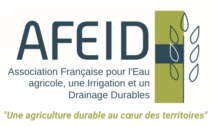La « Khettara solaire » : L’Introduction du pompage solaire collectif dans le système ancestral de mobilisation des eaux souterraines
Innovation field
Morocco /Drâa-Tafilalet/municipality of Ferkla-Essoufla
Summary
In the pre-Saharan area of Morocco, the water that can be harnessed from 'khettaras', which are underground aqueducts designed to collect groundwater by gravity, is in significant decline due to a drop in the piezometric level. This decline is accelerated by pumping for the irrigation of new farms and for drinking water supply. This situation has prompted farmers to set up collective solar pumping projects to supply the khettaras and release them from the constraints of maintaining the galleries. The solar pumping is combined with a buffer tank to store water throughout the day and ensure 24-hour irrigation, similarly to the khettaras, and to compensate for interruptions in the supply of irrigation water to the oasis due to climatic conditions or technical breakdowns of the system. When the innovation was introduced, financing methods and management rules were temporarily applied and juxtaposed with the ancestral rules of the khettaras to encourage all farmers to join the project. Some khettara collectives installed valves to block access to water from the solar pumping system in order to encourage non-members of the project to settle their financial situation and pay the fee equivalent to their rights to water from the khettara. Once all the khettara irrigators have joined the project, the water from the pumping is subject to the same traditional rules for sharing and distributing khettara water. Furthermore, the technical model of solar pumping and water storage in buffer tanks found on individual farms has been revised and applied to khettaras with several water users.
Emergence of the innovation
In oasis areas, the idea of solar pumping to reinforce khettaras has existed for a number of years. A first experience appeared in 2013 in the oasis of Anounizem (Association Anounizem pour le Développement [Anounizem Association for Development], 2014). This local association received foreign funding to implement an idea developed by the Jmâa (oasis council).
Experiments financed by the Office Régional de Mise en Valeur Agricole de Tafilalet (ORMVA-Tf) [Regional Office for the Agricultural Development of Tafilalet], the Agence Nationale de Développement des Zones Oasiennes et d'Arganiers (ANDZOA) [National Agency for the Development of Oasis Areas and Argan Groves], the Initiative Nationale du Développement Humain (INDH) [National Human Development Initiative] and/or associations have been attempted on the Ferkla plain. Some experiments have failed and others have had to adapt to this new method of harnessing water while imposing new rules to manage the resource.
En 2020, un ayant droit de la Khettara « Ait Âmi Hassan » (El Bachir, retraité) et un fournisseur du matériel de pompage solaire « El Hachemi », ont pris l’initiative d’équiper leurs Khettara en pompage solaire et d’y associer un bassin tampon. Les porteurs du projet ont convaincu les autres irrigants que les règles de gestions et le tour d’eau de la khettara seront maintenus et que le dispositif permettra de renforcer l’apport en eau à l’oasis.
After the success of this new model, farmers of neighbouring khettaras were inspired by the idea and adopted it a few months later. They also established new rules for managing water from collective pumping.
In the oases of south-eastern Morocco, groundwater is under heavy pressure from solar pumping to irrigate new date palm farms and for drinking water supply. This pressure is reflected in a significant drop in the piezometric level. A number of khettaras are now experiencing a decrease in the volume of groundwater harnessed or are even drying up. Some farmers decide to irrigate only the plots close to the outlet of the khettara. Others store the small amounts of water flowing from their water turns in the basins traditionally set up between the khettara and the start of the seguias. They then allow the accumulated volume to flow at a higher rate, thus reducing losses through infiltration into the irrigation channels. Some individual farmers pump water from wells or boreholes that they own or rent to supplement the supply of water to their plots.
Solution(s) provided by the innovation
This innovation can reinforce the water supply to oases irrigated by khettaras. Moreover, water harnessed by solar pumping has a relatively constant flow rate and is less sensitive to hydro-climatic conditions, particularly irregular rainfall and surface runoff. The oases of the khettaras could adapt to the increasing use of solar pumping which is in full development in the region.
This innovation will significantly reduce costs, workload and the frequency of maintenance. The technique of deepening and/or maintenance of the khettara’s underground gallery would no longer be used to adapt to the drop in the piezometric level and the decreased flow of the khettara. The drop in the piezometric level would be compensated for by deepening the collective solar pumping well and/or the pump. The frequency and cost of maintenance of the solar equipment is lower than that of the traditional structure (khettara).
History of evolution since emergence (implementation on the field)
Following the success of the first solar khettara equipped with a storage basin, other khettara collectives had financial difficulties in setting up the buffer tanks linked to the solar pumping system.
As a result, the solar pumping system could only supplement the khettara's water supply during daylight hours. The right-holders of these khettaras adapted the traditional management rules and water turns to organise themselves around daytime pumping. Furthermore, the choice of well site or communal borehole led to low flows and limited potential for harnessing water. The previous collective pumping projects in Ferkla were built on deep aquifers with low water potential. The choice of these sites can be explained by the proximity of the oasis to be irrigated on the one hand, and on the other, because it is forbidden to pump in the catchment area of other khettaras (possible opposition of the collectives of other khettaras to pumping projects financed by the State and NGOs).
In 2020, the successful solar kettara (named ‘Ait Âmi Hassan’) had learned from previous failures and malfunctions. The farmers of this khettara were able to raise the funds to set up a buffer tank to store water during the day, ensure 24-hour irrigation and continue supplying the oasis with irrigation water after system breakdowns and stoppages. Furthermore, the collective of this solar khettara dug the communal pumping well in the catchment area of their khettara where there is significant groundwater potential.
Collectives in neighbouring khettaras have duplicated this innovation and developed other solutions to finance their project. Some have managed to overcome the financial obstacle. Others have introduced management rules to separate the traditional khettara water from the new water harnessed by solar pumping. Only farmers who are members of the project have access to the water from solar pumping. Manual valves have been installed and operated according to the members' irrigation periods.
Users' opinions / elements of acceptance of the innovation
In Ferkla, following the local success of the ‘solar khettara’ model, the innovation has been duplicated in neighbouring khettaras. There are currently four such khettaras. The idea has spread throughout the Ferkla area and other collectives are also considering applying it to their khettaras.
Economic assessment of the innovation
The overall project cost is approximately 15,000 euros per khettara. This includes the cost of purchasing the equipment (photovoltaic panels, pumps, cabling and pipes, geomembrane for the tank) and the works (earthworks and installation of the buffer tank). The labour involved in digging the wells and installing the water system is not included in the overall cost as it was provided by the irrigators themselves.
The farmers in these khettaras have developed different methods and techniques to pay the costs of digging and equipping the wells with electric pumps, setting up the tanks and purchasing the water pipes and photovoltaic panels. To raise enough finance they had to sell a communal plot of land associated with the khettara, each right-holder had to pay a fee proportional to their irrigation time, and/or the duration of water turns was also increased against a yearly fee for the additional time if there were surplus volumes of water.
The overall cost is distributed in proportion to the water rights of each beneficiary. This is a one-off payment to have access to water from the collective pumping project, which varies from 75 to 90 euros per hour of rights to water from the khettara per water turn.
Once the payment has been made, the farmer has permanent access to a relatively stable flow of water to irrigate his/her plots, unlike the flow from the khettara alone which (according to the farmers) fluctuates throughout the year.
Prospects for the evolution of the innovation
As the author of this text, it is proposed to develop methods to reduce evaporation losses from the buffer tanks and to change the connection point of the water drained by gravity from the khettaras and the water from solar pumping. These waters are currently mixed at the level of the conducting part of the khettara where significant losses are observed. It is therefore suggested to use the former collection basins of the khettaras as meeting points for the two waters.
The widespread use of solar pumping in the khettaras of the area would place the question of its sustainability in this oasis context back on the agenda. Indeed, the groundwater resource has shown its limits following the increase in pumping to irrigate individual farms and to supply drinking water to the rapidly growing towns (drying up of springs and khettaras, continuous piezometric drop).
Unlocking access to groundwater by pumping entails risks of overexploitation of groundwater. Some collectives might consider increasing the water supply in their perimeters to the detriment of other khettaras/oases. The sustainability of the whole system would thus be called into question as the withdrawals would potentially exceed the aquifer’s renewal capacity.
Conditions for the dissemination of the innovation and replicability
This innovation could initially be disseminated throughout the oasis areas of south-east Morocco. It is proposed to refer to the previous flows harnessed by the khettaras to size the next solar pumping projects.
The innovation could also be applied in small and medium hydraulic perimeters irrigated by springs whose water flow is currently regressing due to the pressure on the underground resource. This innovation could be applied to all irrigated perimeters that are collectively organised around the groundwater resource (khettaras, springs, oughrour, foggaras (Algeria) (Idda et al., 2017), qanat (Iran), independently of crop types.
Associated risks, negative externalities
The overexploitation of groundwater is the main risk in the implementation of this innovation. It is suggested to firstly refer to the previous flows harnessed (via the khettaras or springs, etc.) to irrigate these oases or perimeters. Other criteria can be developed and fixed through a participatory approach with all farmers (in traditional oases and agricultural extensions) to mitigate the overexploitation of the groundwater resource. An approach that integrates all stakeholders and prioritises the renewal capacity of the water table is strongly encouraged as this could help avoid the tragedy of this common good.
Furthermore, the success of these collective water and solar energy projects would provide a basis for study and reflection on collective, concerted access to groundwater on a regional scale.
Additional documentation
https://www.facebook.com/534845203221099/posts/678388235533461/
Association Anounizem pour le Développement [WWW Document], 2014. https://www.facebook.com/permalink.php?story_fbid=pfbid06NHX6Dt8BTQdVLxzKnZm5nLwPNXZ6j3a3WD1KcNS2pmxeuEfdWHUe4SJivpeMts2l&id=534845203221099




Leave a Reply
Want to join the discussion?Feel free to contribute!